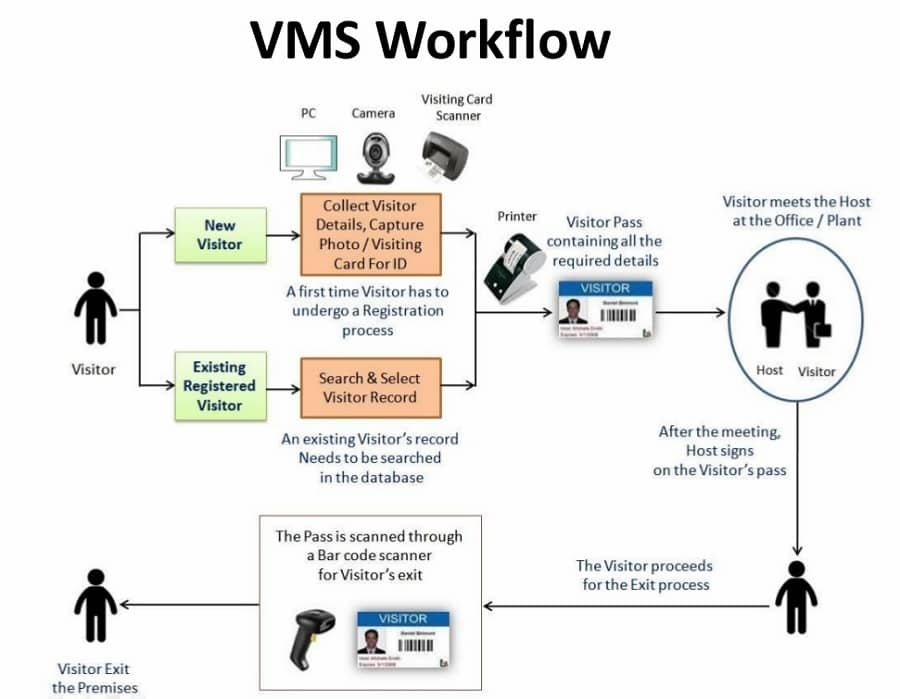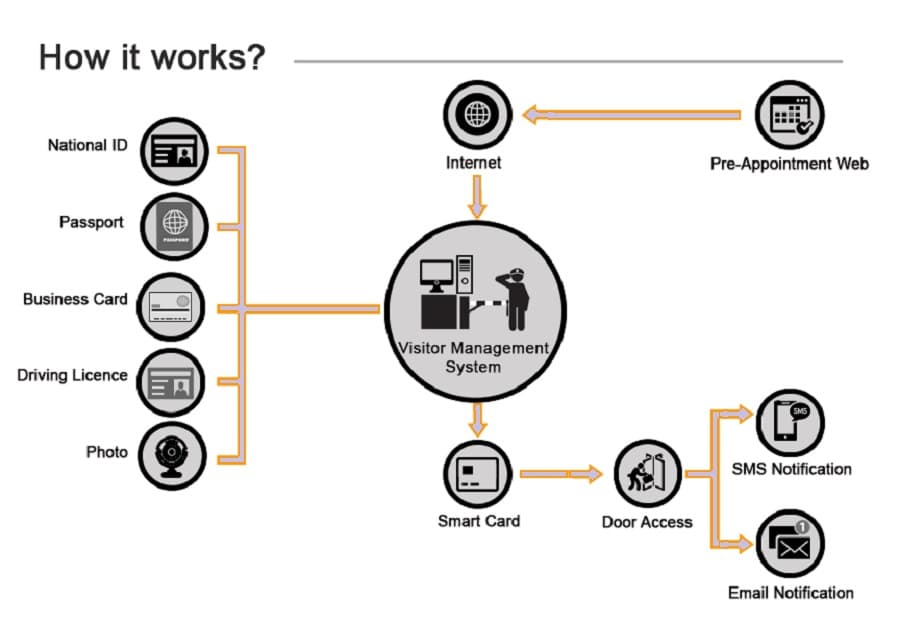Schools should always make an effort to address any security concerns to ensure a safe learning environment. A “one-size-fits-all” approach to implementing security measures could mean certain aspects are skimmed over or avoided entirely, so when doing so, it’s important to address the specific needs of a campus.
It’s recommended to look at a school and its current security measures from within in order to ascertain where adjustments need to be made. Vulnerabilities will be detected at each individual school that might not be considered in standard top-down security protocol.
Problems a campus security system should address #
Campuses can successfully improve their security systems and procedures by taking note of the following common school security issues.
Inability to reach everyone through the current communication setup #
To ease concern among everyone, from teachers and staff to parents, schools should consider implementing concrete communication systems to ensure that everyone receives the necessary information in the case of an emergency. Pre-programmed alerts are recommended for quickly spreading safety information.
Failure to upgrade #
Oftentimes, schools are prevented from improving campus security equipment due to tight budgets. Investing in software solutions that will maximize and incorporate a school’s existing technology is a way of complying with strict budgetary requirements.
Dealing with discreet information #
There may be situations where immediate communication is necessary, but not for everyone. Some alerts may contain sensitive or private information only intended for specific personnel. Using an app of PC alerts similar to those for mass communications will be most effective in delivering information without delay.
Campus security: Improvement measures #
The following measures can be implemented to enhance a campus security system. Schools that best handle challenges in security and successfully prevent unwanted incidents in the future typically use a multitude of measures.
An enclosed campus #
Fences and gates may be less than aesthetic, but they will undeniably improve the security of a building and promote campus public safety. By monitoring who comes in and out of a school, there is a greater sense of control over access.
Clearance and security check for visitors and staff #
Similar to the idea of enclosing the actual buildings, campuses can screen visitors for safety before clearing them to enter the school premises. This screening process should also be required before employing teachers and other employees. It’s important to double-check before hiring someone to be sure they do not pose any threat to campus safety.
Security training for students #
Students, along with faculty and staff, should be trained to be security conscious. Making everyone alert, including students, will increase the probability that potential threats will be promptly reported. In this training, students should be encouraged to speak up if they ever see or hear anything suspicious or concerning.
Taking preventative measures for campus safety #
Teachers should not only know how to respond in any situation but should take preventative measures. For example, ensuring that every classroom has some means of communication with the administration, outside help, or situating the classroom furniture in a protective way are simple steps that will leave teachers more prepared.
Access control for campus security #
One option for schools is to give students access cards that allow them entry into the necessary buildings but restrict access for others. Other related access control measures include security cameras, headcounts of how many people are where, and simultaneous management of multiple locations.
University security #
University security varies from school to school but always centers around making everyone feel comfortable and safe. Possible university security measures include training in self-defense as well as awareness and resources to address situations of assault.
Most U.S. colleges have some sort of “blue light” security system in place where students are able to click a button that immediately signals to university security personnel that someone needs help. Additionally, campus police departments typically provide escort services to anyone who feels uncomfortable walking somewhere alone, particularly at night.
Most students like to stay informed and feel as though they are receiving prompt communications. Many universities have systems in place that provide this. For example, Syracuse University utilizes an alert system where students receive an email and a text message—and sometimes an automated phone call— whenever there is important information the school needs to relay quickly.
The premises of educational organizations are public places where the management of a complex flow of visitors – ranging from scholars to educators to students to a variety of one-time and frequent visitors – requires proper consideration.
These institutions have to manage both the identity of visitors and access to certain areas and facilities. For instance, even a teacher or professor may be restricted in terms of access to certain rooms, while visitors may have been limited to only specific areas of the campus or the school building.
Those measures require implementation of often quite complex access management systems amidst growing security concerns across schools and other public institutions.
Security setup for campus safety #
Providing reliable campus safety and security is difficult. Unlike office buildings, where you have a few points of entry, you should usually secure multiple buildings and wide open areas in the nearby surroundings. This, in turn, requires the adoption of a variety of security measures and access control methods.
Video surveillance may be good to monitor open spaces, but it is a passive method and can only complement a school security system. Pairing surveillance with a team of security personnel is normally the best way to ensure robust security response and safety. By implementing this combination of technology and personnel, schools can take preventive measures against undesired visits and pay special attention to visitors who pose a potential threat.
Security for schools should also include a well-designed plan for access control once a visitor enters the campus area or a school building. Obviously, you have to restrict access to some rooms and areas, which is only possible through a system of electronic badges/cards, key fobs, and/or door locks that use advanced authentication methods.
A visitor’s card, for instance, could provide access only to a designated conference room where, say, parents are allowed to meet teachers. An advanced system would be able to track the route of a visitor and thier current location within the campus or a specific building. A school may decide to implement door locks that always require access rights on entry, while providing free passage out for persons who are already in the room.

Security for schools should also include emergency situations such as fire or gas leakage. Therefore, an all-encompassing security system should feature sensors for CO2 and other harmful gasses, as well as a fire alarm. Then, you should have an evacuation plan in place that takes into account various scenarios and plans out safe routes for evacuation even when one or more of the area exits are blocked or inaccessible. The more backup action plans you have, the better, as emergencies often develop in unplanned ways.
Also, campuses require power backup and surge protection to ensure safety and security systems are operational all the time. The security of any public institution requires the consideration of a multitude of factors, as well as risk mitigation of other possibilities that can arise unexpectedly.
Systems for campus safety and security #
It’s impossible to draft a universal blueprint for campus safety and security. Each school has specific areas of concern, including building details that should be taken into account. Hence, school security is more about a well thought out system of safety and security measures working in tandem, rather than installing random technology and devices.
Even the most basic electronic visitor management system should feature ID capabilities, connection to a searchable database, and automatic door access. Adding one-time ID card issuing or digital access will additionally improve the basic functionality of an access control system for spaces with huge visitor traffic, such as colleges and universities.

A security system like this provides a certain level of security for both school students and teachers as well as for visitors. For instance, you can instantly get a report on the number of visitors in the secured area in case of an emergency. A more advanced system could also provide visitors’ locations within the secure perimeter.
Here is how this kind of system works in practice:
- A visitor approaches the school’s entry point
- The camera takes a photo of the visitor upon entry
- The system records all required details of the visitor
- A visitor badge with a photograph of the visitor is issued
- Access rights are assigned to the visitor (via electronic card)
- The visitor details are entered into the system and they enter the area
- The software records all visit details and exit times for each visitor.
The above list is not complete and a school/college security system may feature other and more advanced functionalities. For example, an organization may decide to track visitors in real-time, which requires a lot of effort and marked investment in both software and security personnel.
The physical presence of security guards is also a major safety and security measure, and should work in cooperation with the security technology of a campus. By combining a reliable school safety and security system with trained security staff, you can safeguard the learning environment and promote campus public safety in a more robust way.

